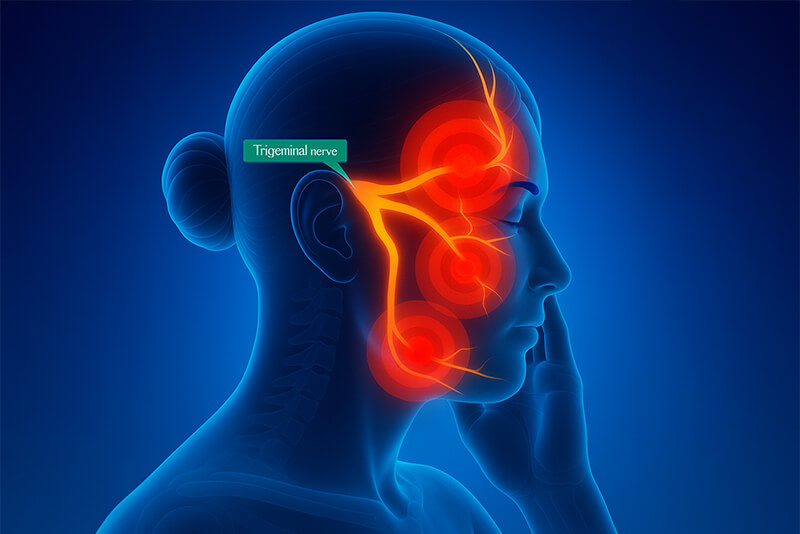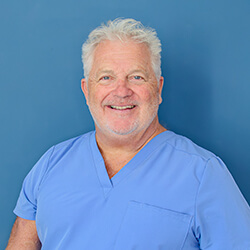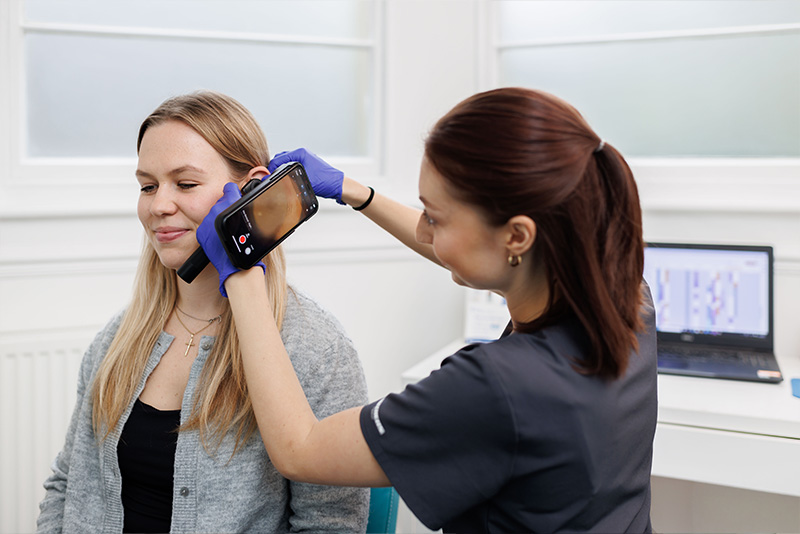
Trigeminal neuralgia is a chronic nerve pain condition caused by inflammation of the trigeminal nerve. The trigeminal nerve has three branches and supplies c sensation to the face, upper eye (ophthalmic), upper cheek (maxillary), and lower jaw (mandibular) divisions. For those affected, even the lightest touch such as brushing teeth, eating, drinking, talking, swallowing, or applying make-up can trigger sudden, electric shock-like pain. These attacks can last from a few seconds to several minutes, often occurring without warning and usually affecting one side of the face. The pain can be severe, debilitating, and disruptive to everyday life. Many patients describe themselves as depressed or in a very low mood.
Severe causes can be a blood vessel pressing on the trigeminal nerve, following a stroke and neurological disease but these are rarely the cause of the condition and often ruled out following neurological investigations and examinations instigated by the GP. More often than not the results come back with no abnormality. Treatment is Pain Management through medication and sometimes surgery is recommended to obliterate the nerve. The cause of the trigeminal nerve pain is often unknown.
At The House Clinics we have theorised the cause of the trigeminal neuralgia using a clinical and anatomical rationale. In short, it’s due to the upper cervical spine and the jaw and malfunctioning of the trigeminal nerve.
The trigeminal nerve is connected to C1, C2 and C3 spinal nerves via the trigeminal cervical nucleus TCN, a shared sensory processing centre located in the brain stem and upper cervical spinal cord. It is reasonable to assume therefore that by treating the upper cervical spine that you can affect the trigeminal nerve.
The TMJ or jaw joint and C1-C3 vertebra are part of an interconnected muscular skeletal and neurological system. Dysfunction in one joint can significantly impact the functioning of the other joint primarily through the shared neural pathways which also affects posture and muscle balance.
Experience shows that in approximately 90% of trigeminal neuralgia cases treated there was dysfunction in the upper neck vertical joints C1,C2 and C3 levels. The jaw joint or TMJ was found to be affected in 20% of cases.
At The House Clinics, Bristol, we offer a unique treatment regime using specialised chiropractic treatment for trigeminal neuralgia developed by Dr Jonathan Cook.
The trigeminal nerve shares the same junction box (nucleus) as C1 ,C2 and C3 spinal nerves.
The trigeminal nerve also runs very close anatomically to the TMJ or jaw joint and the facial muscles. The treatment therefore is directed at the upper neck C1 C2 C3 vertebral joints and 90% of cases have dysfunction in the neck The jaw joint- 30% of cases have joint misalignment and the muscles of the jaw -30% have jaw muscle dysfunction.
The House Clinics Bristol specialise in the treatment for Trigeminal Neuralgia. Gentle adjustments to the upper neck joints and surrounding muscles, TMJ (jaw joint) combined with targeted acupuncture along the path of the affected branches of the trigeminal nerve. A combination of these techniques have been shown to be effective in 95% of cases providing very significant pain relief, a reduction in the medication and improved quality of life for sufferers. Depending on the chronicity of the trigeminal neuralgia treatment is normally performed twice a week for 3 to 4 weeks. As the pain decreases so does the frequency of treatment.
Supplements are also prescribed B12 and Vit B complex Help to improve nerve function and repair, which leads to pain relief, reduced inflammation and repair of the nerve tissue
Magnesium Glycinate and Magnesium Citrate supplements help to block pain by the GABA receptors in the brain.The quality and bioavailability (how easily absorbed) are crucial, we stock carefully selected products in the clinic.
Treatment normally consists of three weeks of two treatments a week in that time there should be a positive improvement, then the treatment frequency is reduced depending on progress. However, we will support your progress every step of the way.
If you’re suffering with Trigeminal Neuralgia, don’t wait. Book your consultation today and start your recovery with our expert team.
The cause of the trigeminal nerve pain is often unknown. - A Theoretical Cause of Trigeminal Neuralgia
At The House Clinics we have theorised the cause of the trigeminal neuralgia using a clinical and anatomical rationale. In short, it’s due to the upper cervical spine and the jaw and malfunctioning of the trigeminal nerve. The trigeminal nerve is connected to C1 C2 and C3 spinal nerves via the trigeminal cervical nucleus TCN , a shared sensory processing centre located in the brain stem and upper cervical spinal cord.
It is reasonable to assume therefore that by treating the upper cervical spine that you can affect the trigeminal nerve.
The TMJ or jaw joint and C1-C3 vertebra are part of an interconnected muscular skeletal and neurological system. Dysfunction in one joint can significantly impact the functioning of the other joint primarily through the shared neural pathways which also affects posture and muscle balance. Experience shows that in approximately 90% of trigeminal neuralgia cases treated there was dysfunction in the upper neck vertical joints.C1,C2andC3 levels . The jaw joint or TMJ was found to be affected in 20% of cases.
Gentle adjustments to the upper neck joints and surrounding muscles. Depending on the chronicity of the trigeminal neuralgia treatment is normally performed twice a week for 3 to 4 weeks. As the pain decreases so does the frequency of treatment.

Secure your appointments instantly or get tailored advice from a practitioner before booking, we’ll call you back at a time that suits you
Book Online
Struggling with blocked ears and muffled hearing discomfort, our ear technicians are here to help you. Microsuction is a safe choice for most people with problematic earwax build-up.